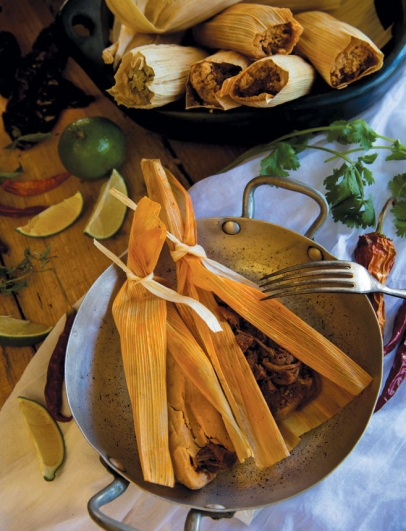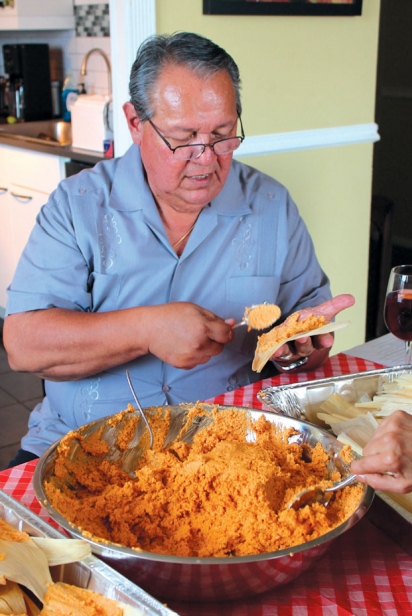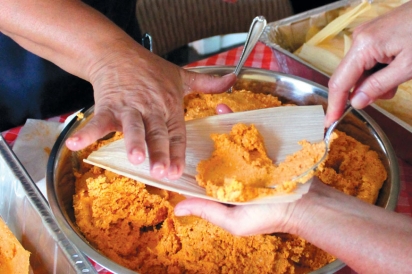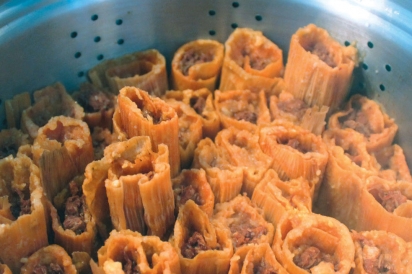A Family Tradition of Tamaladas
Good things come in these small Christmas packages
Like many Latinas, Christina Rodriguez has vivid memories of growing up in her mother’s kitchen, a busy room in their Galveston home full of friends, family and plenty of food. “We’d make five pounds of tortillas a day,” she says. And that was just to start.
Back then, all the kids attended Catholic school at Sacred Heart and would come home for lunch, sometimes with friends in tow. With her brood of eight at home, Christina’s mother, Maria Rosas, was always ready. For her husband, a longshoreman, she prepared the typical Mexican fare: rice, beans, pork, tortillas. Carried with their families from Morelos, Mexico, south of Mexico City, only one or two generations before, these dishes took up permanent residence on the stove. The other half of the stove was always dedicated to at least one more dish: spaghetti, lasagna, fried shrimp. The first time 16-year-old Christina brought schoolmate Roy Rodriguez over for lunch, there were three. “That’s why he married me,” Christina says, laughing. “He thought we were having a party.”
Now together for over 45 years with two sons of their own, Christina and Roy, a veteran chef who now manages the East End Street Market on Navigation Boulevard, speak warmly of their family food traditions, which they dutifully share with family and friends. One beloved tradition is making tamales during the holidays. “It’s really not Christmas without tamales,” says Christina. And she’s not joking. Akin to turkey on Thanksgiving or ham for Easter, for the Latin community, tamales reign at Christmas. Maria was a tamale queen, so there were always plenty of the fragrant steamed packets of meat-stuffed masa during the holiday season.
“December was the month of making tamales,” says Christina. “You didn’t want to drop by because if you did, she’d put you to work.” But it was fun, and everyone took shifts, indulging and socializing as they worked. Every year, in addition to the 100 dozen or so they’d prepare for the family, 100 to 200 dozen more were sold or given away.











